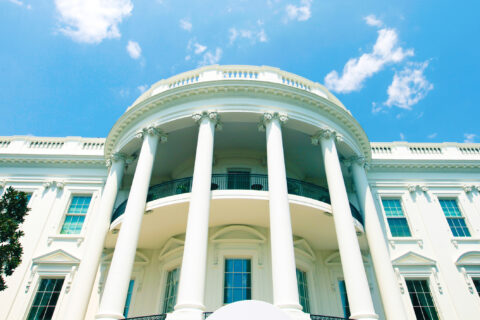The pandemic created a renewed focus on the health of the built environment. At the same time, increasingly common wildfires, heatwaves, droughts and storms underscore that climate change is a threat multiplier for public health. In this pivotal moment, sustainability leaders are re-emphasizing health considerations in policymaking and programming.
NLC and the International WELL Building Institute (IWBI) cohosted the webinar, Elevating Health Across Sustainability Initiatives with a panel of three experts in the field: RE Tech Advisors President and Founder Deb Cloutier; Savills US Executive Managing Director Wendy Feldman Block; and Johnson Controls Director of Healthy Buildings Services Jon Douglas. IWBI Executive Vice President for Policy and Advocacy Jason Hartke moderated the session where panelists discussed emerging trends and policy needs for recentering health in sustainable building practices.
The experts emphasized that people experience climate change in their daily lives through their health and well-being. Focusing on health through objectives like improving air quality, reducing noise pollution, and increasing access to green space and natural light are crucial steps in improving people’s physical and mental health while meeting necessary sustainability goals. To meet these objectives, the panelists outlined key insights municipal leaders should know to improve the health of municipally owned buildings and make it easier for private building owners to do the same.
First, sustainability and indoor air quality are not mutually exclusive goals – and when done well, they can result in cost savings. Health and sustainability should not be in competition. Thoughtful building design can minimize energy usage while still having air circulation, good lighting and the other elements that benefit people’s physical and mental health. Ventilation is often the go-to in improving air quality but can be energy intensive, according to Douglas. However, there are other ways of creating good air quality that require minimal energy usage, such as filtration and UVC disinfection. Douglas explained that when air quality and sustainability are approached in unison, it can save money. For example, Johnson Controls folds indoor air quality audits into their sustainability projects without hampering the budget, saving costs and amplifying benefits for municipal, university, school and hospital buildings and other clients.
Second, existing health standards and policies can make it easier for municipal government to lead by example without reinventing the wheel. Cloutier suggested that creating healthy workplaces begins with maintaining thoughtful workplace health policies developed in response to the pandemic, such as vaccination policies, handwashing policies and surface decontamination policies. Utilizing existing health guidelines, like the WELL Building Standard or ASHRAE Standards equips municipalities with a comprehensive toolkit to implement healthy building practices. The Department of Energy’s Building Solutions Center also provides tools, case studies and funding opportunities for municipalities and private building owners to identify obstacles and resources for healthy, sustainable building practices.
Third, improving building codes using existing health standards ensures that private developers are also meeting emerging health and resilience needs. Feldman Block highlighted the post-pandemic mismatch between supply and demand for office space, which has given tenants more choice – and they’re opting for spaces with better air quality, filtration and other health priorities. While developers are noticing and responding to these trends, Douglas explains that government can also encourage healthier, more efficient buildings by upgrading building codes for health and resilience. Municipalities can incorporate guidance from the ASHRAE standard into building codes to regulate indoor air quality, for example. Buildings being developed now must be prepared for health and climatic challenges for many decades to come. City leaders must ensure that businesses have the tools and guidelines they need to construct health- and climate-safe buildings that meet communities’ current and future needs.
Learn More
In case you missed the Elevating Health Across Sustainability Initiatives panel discussion or would like to watch it again, NLC members can view the entire webinar at any time.








